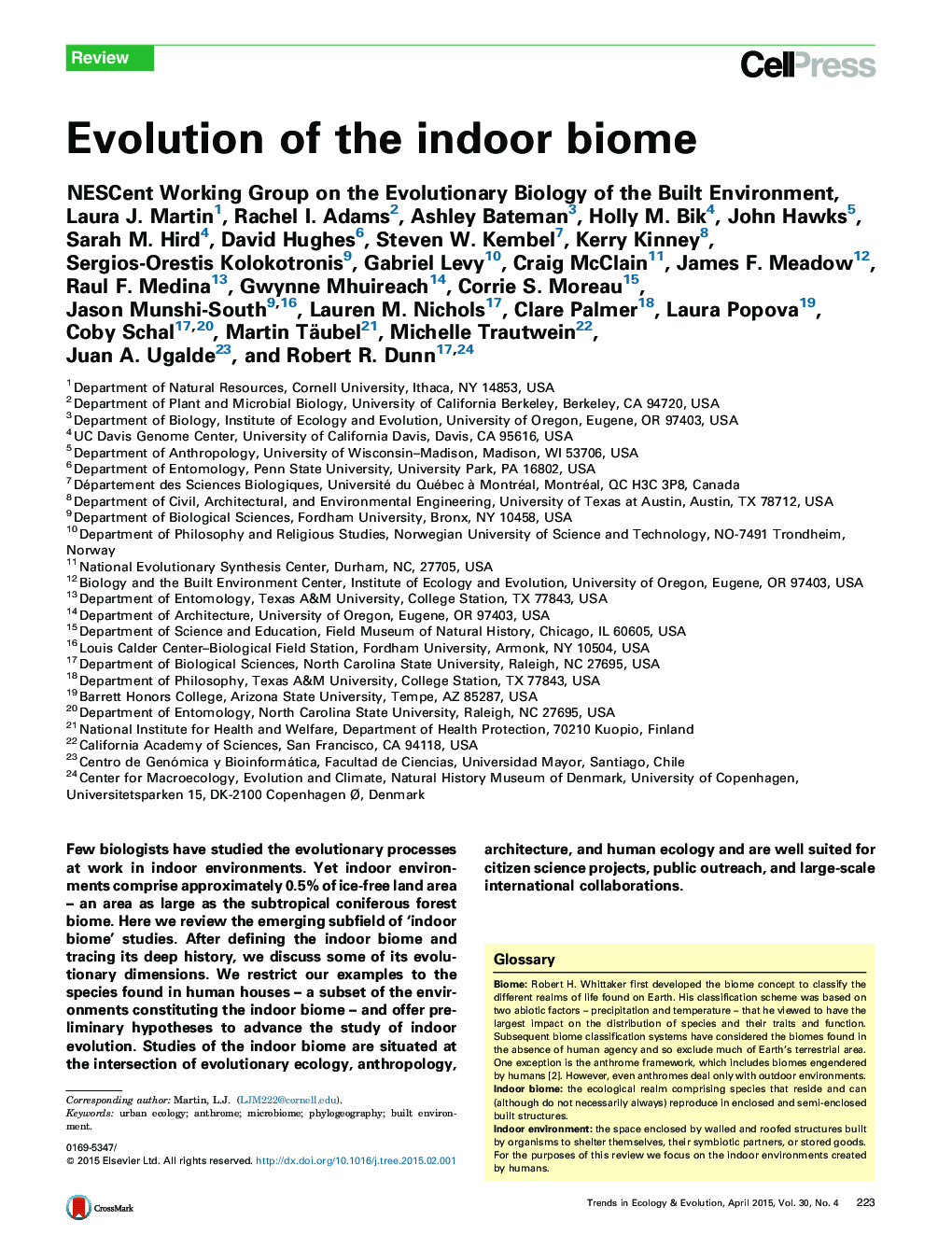| Article ID | Journal | Published Year | Pages | File Type |
|---|---|---|---|---|
| 142410 | Trends in Ecology & Evolution | 2015 | 10 Pages |
•We review literature on evolution in the indoor biome.•The indoor biome is an expansive and expanding habitat.•Study of the indoor biome combines evolutionary biology, ecology, architecture, anthropology, building science, and human ecology.•Studies of the indoor biome are well suited for citizen science projects, public outreach, and large-scale international collaborations.
Few biologists have studied the evolutionary processes at work in indoor environments. Yet indoor environments comprise approximately 0.5% of ice-free land area – an area as large as the subtropical coniferous forest biome. Here we review the emerging subfield of ‘indoor biome’ studies. After defining the indoor biome and tracing its deep history, we discuss some of its evolutionary dimensions. We restrict our examples to the species found in human houses – a subset of the environments constituting the indoor biome – and offer preliminary hypotheses to advance the study of indoor evolution. Studies of the indoor biome are situated at the intersection of evolutionary ecology, anthropology, architecture, and human ecology and are well suited for citizen science projects, public outreach, and large-scale international collaborations.
